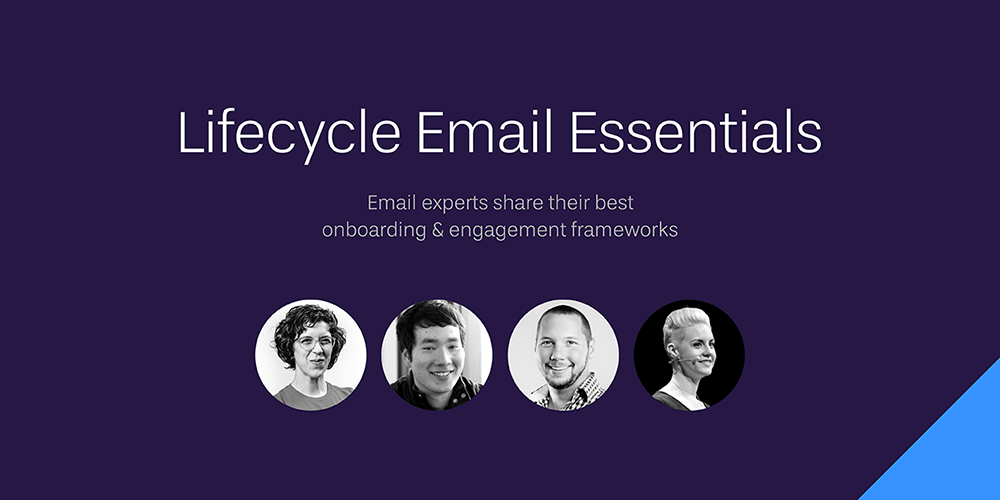As SaaS founders, we often avoid and delay raising prices. It’s an uncomfortable thing to face.
According to Nick Fogle of Churnkey, with inflation affecting all industries, raising the price of your SaaS subscription plans shouldn’t even be a question:
“You have to do this if you care about the long term success of your business.”
But how exactly do you approach your price increase?
In this article, you will learn:
- How inflation affects your SaaS business
- How to soften the blow for your customers
- Mitigating price sensitivity
- How often should you raise prices
Watch the full recording below, or read on for the key highlights.
If you’re looking for specific examples, welcome to check out this guide on pricing update emails.
Don’t wait for the muse. Apply this step-by-step method to write high-performing email campaigns in hours, not weeks.
How inflation affects your SaaS costs
When we think of inflation, we immediately think about the effect it has in increasing the prices of basic necessities (e.g. food and gas). But how does this affect us as SaaS businesses?
Because SaaS businesses need real people to operate. And while inflation differs across locations, your staff’s salary should let them afford their daily living expenses in their area:
“As a business owner who’s looking to hire people, your employees are going to require more pay to survive in those areas. Inflation ripples across everything.”
In the figure above, we see that for a SaaS product priced at $100 monthly in 2017, you’d have to gradually increase your prices if you want to pay your employees enough so they could keep up with the decreasing purchasing power of money.
Which is why raising prices doesn’t equate to making more money:
“In real terms, you’re not increasing prices to make more money at the end of the day. You’re just trying to keep up and maintain that same level of purchasing power.”
Lessons from the financial crisis of 2008
During the crisis of 2008, SaaS businesses were pushed to either raise funding or get acquired in order to survive:
“They sent out this memo to all the founders. It was basically saying: raise funding as soon as possible or if you can’t, get acquired. You need to be realistic about your evaluations and focus on survival.”
And while the tone has shifted since then, the lessons are still applicable in today’s scenario if SaaS business want to ride the waves of inflation:
“If we were to tailor this and rewrite it for today, I think the best thing that founders can do is if you can get profitable or increase your margins as fast as possible, you’ll be better off and you’ll be able to survive whatever comes next.”
As a business owner, you’re in an empowered position to control your destiny:
“You can change prices, you can communicate with your users, and you can do the research to understand how to increase prices, increase your margins and actually survive rather than just being a victim to your circumstance.”
Softening the blow: how to approach your price increase
Most SaaS founders hesitate on the decision to increase prices because there’s a fear of damaging your brand if not done right. On the other hand, an increase will help you keep up with your operational costs:
“That fear is justified: that you could damage your brand or could anger users by rolling this out in an incorrect way. But on the other side, even having done that, in some cases they increase prices two or even three times. And despite that price hike, they doubled their revenue.”
So how do you increase your prices without losing half of your existing customers?
Start with a small price increase
Don’t be afraid to make mistakes.
You won’t get it right the first time, so it’s best to test the waters and figure things out by starting with a small price increase:
“If you feel like you need to have the perfect price, gradually increase it. You don’t have to get it perfectly right the first time and it’s a very qualitative thing. It’s very difficult to figure this out without first just doing it.”
Announce it with the right messaging
Because price increases are such a touchy subject, you have to be careful about how you break the news to your customers.
When writing your pricing update email, you have to make it about your customers and not about you:
“The problem with that email is it focused on all of the rising costs that the operators of Baremetrics now have, all the tech that they have and all these different issues around the hardships they were facing.
What they failed to do is focus on the customer and the value that they get from the tool. They didn’t focus on the additional value that you’re gonna get for the price hike.”
Patrick Campbell of ProfitWell did a great deep dive on Baremetrics’ price increase email and how it could be improved. Read the thread here.
Don’t wait for the muse. Apply this step-by-step method to write high-performing email campaigns in hours, not weeks.
How should you handle pricing update emails?
Personalize your emails
“If you were in a position where you have the ability to personalize the emails with merge fields or value metrics.
For example you have a video app, you can tell your users about how many videos they’ve created and how long they’ve been a customer as you’re communicating this message around the price increase.”
Remind customers about the value they’re getting
“Don’t make this about you andabout the hardships you’re facing. It’s about what you’re doing as a business to better serve these customers at the end of the day. Remind the customer about the value and it’s not a bad thing to offer flexibility.”
Make sure they can talk to someone from your company
“Be very clear in the email that if somebody is facing a hardship or if the price increase is something they can’t do, have them just respond and make sure that you have a human on the other side of that email that can get back to them.”
If you’re planning a price increase soon, read our guide on how to write a good pricing update email.
Legacy pricing and a rolling increase
For very low tier plans, you can also try legacy pricing for those customers at a certain period of time. A rolling increase will help update the prices for both your new and existing customers:
“Do a rolling increase because it could work really well. If you say, ‘Hey, in three months, we have to do this,’ or you could say, ‘Here’s a 10% discount for life because we value you as a customer.’”
How to retain price-sensitive customers
Price increases will definitely result in a percentage of your customers canceling their subscriptions. You can still prevent them from leaving by doing something before they churn:
“Once they leave, a little offer is not going to get them back. You have to intercept that churn intent before it happens.”
So how exactly do you intercept it?
Ask them why they’re canceling
You can use a simple tool like Typeform or Google Forms to get an idea of the reasons behind the cancellation (e.g. leaving for a competitor, not using the product, price is beyond the budget).
Have a counter offer ready
By analyzing the results of the survey, you can come up with a proper counter offer for each reason. Churnkey lets you automate this process:
“You could have an offer automatically when they click ‘Does not fit my budget,’ you can tailor a custom discount and custom copy that caters to this specific user.”
And even if you don’t have a tool for it in place, a customer success manager can manually make those offers to your customers.
But even if they don’t accept that offer right away, you’re still able to disrupt the cancellation process:
“They’ll just say ‘let me think about this.’ You’re trying to disrupt that thought pattern by reminding them of the value and showing them that you can offer something to help them stay.”
How often should you raise prices?
With inflation increasing every year, SaaS businesses should also raise prices to cover their operational costs. But to avoid scaring off your customers, always remind them of the value they’re getting from your product:
“You’re not going to nail this on your first try and if inflation stays hot, you’re going to be behind the eight ball again before too long.”
Final advice
Don’t treat price increase emails as generic email broadcasts.
“Don’t send out a blanket, generic message to all your users that you’re increasing prices without recourse.”
Do have a tool or flow in place to help reduce churn.
“Having something like this in place also reduces the fear of increasing your prices.”
Learn more from Churnkey
Churnkey is a platform that helps SaaS companies deliver and manage custom cancellation flow to retain more customers, letting them focus on product and growth. Learn how to turn voluntary churn into a growth lever by downloading their whitepaper here.
Don’t miss out on new articles. Subscribe to our newsletter and get your monthly dose of SaaS email marketing insights.






